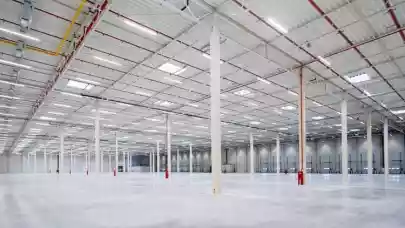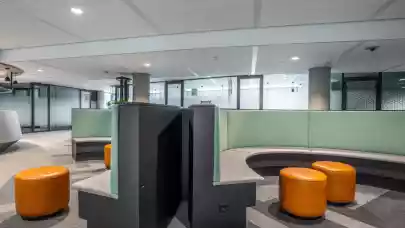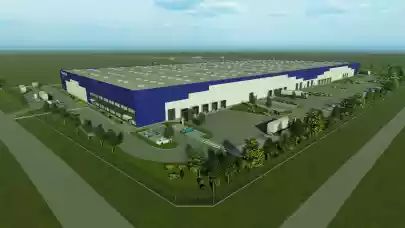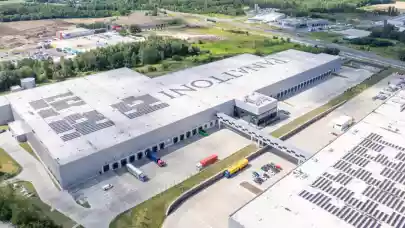
Poland's industrial market remains steady and adapts its growth rate to the macroeconomic conditions in both the local and European markets. The gross take-up statistics, which stood at 870,000 sqm at the end of Q1 2024, demonstrated the restricted growth of businesses in the industrial and logistics sectors. Developers supplied about 850,000 sqm between January and March 2024, which prompted Axi Immo analysts to report a slight increase in vacancy rates to 8.2%. The industrial sector has more than 32.7 million sqm of total stock. Nonetheless, a further 2.3 million sqm are still being built.
In Q1 2024, transaction volumes, including warehouse and manufacturing assets, amounted to €138 million (-66% y-o-y). Despite one of the historically lower results, the industrial and logistics sector remained the leader of the list with a 38% share. The largest among the six transactions completed was Hillwood’s portfolio purchase of the two neighbouring parks, West Park Pruszków and West Park Ożarów, from DWS/RREEF.
Grzegorz Chmielak, Head of Valuation and Capital Markets, Axi Immo, concludes: “Despite the general slowdown in the market, the warehouse and manufacturing sector remains a key area of investment, attracting 38% of the total capital realised in the commercial real estate market in Poland. This demonstrates unequivocally its strategic significance and long-term supremacy. As the macroeconomic environment gradually improves, we anticipate more investor activity in the space, with more deals anticipated in late 2024 and early 2025.”
The Polish industrial market’s overall take-up at the end of Q1 2024 was 870,000 sqm (-25% y-o-y), with 64% of all completed transactions coming from new contracts and expansions. The regions of Mazowieckie (207,000 sqm), Łódzkie (178,000 sqm), and Wielkopolskie (166,000 sqm) leased the majority of the space. The biggest lease deals, on the other hand, were a new 62,000 sqm lease signed by a private retail tenant at Hillwood Łódź II (Chocianowice) and a 60,000 sqm lease by an e-commerce company at Panattoni Park Poznań A2.
Anna Głowacz, Head of Industrial & Logistics, Axi Immo, said: “The majority of the trends seen in 2023 are expected to continue in the first three months of 2024. Tenants are holding out for the economy to pick up since this will spur output and lead to more contracts for logistical services. Developers keep a tight eye on this situation and will wait to start new projects until vacancy rates decline. On its own, the market is still changing how ESG policies and strategies are implemented, affecting the kind and calibre of available investments.”
The total stock of modern industrial space was 32.7 million sqm as of the end of March 2024. In the analysed period, developers delivered 850,000 sqm (-55% y-o-y). The Lower Silesian Voivodship (272,000 sqm), the Pomeranian Voivodship (167,000 sqm), and the Greater Poland Voivodship (160,000 sqm) received the biggest volume of supplies. 2.3 million sqm are still under construction (+8% y-o-y), with most of it located in the Voivodships of Lower Silesian (686,000 sqm), Łódzkie (397,000 sqm) and Mazowieckie (379,000 sqm). The great majority of the warehouse parks presently being built are the result of initiatives initiated in 2023. Developers are delaying the start of new projects until after the vacancy rate declines. As of the end of March of this year, it was 8.2% (+170 bps y-o-y). The two Voivodeships with the most space still up for immediate leasing are Mazowieckie (558,000 sqm) and Dolnośląskie (510,000 sqm). Conversely, the voivodeships of Świętokrzyskie (15.9%), Lubuskie (13.9%), and Dolnośląskie (11.5%) had the highest availability, percentage-wise.
Relatively low new supply and upwardly trending vacancy rates on the main markets have not affected changes in base rents, which remain in the range of €3.6/sqm/month to € 5.5/sqm/month for space in big-box developments. However, analysts at Axi Immo forecast that due to the current market situation and the large volume of vacant space, some landlords in highly competitive markets may decide to reduce the level of effective rates in the medium to long term.
Renata Osiecka, Managing Partner, Axi Immo, concludes: “We estimate that take-up will be dominated by extensions and consolidations of space until there is more stabilisation and improvement on the client side. We anticipate less rash moves to build new projects in reaction to the rental market. Nonetheless, we maintain our composure since vacancy rates control the situation, and national developers have repeatedly shown that they can act swiftly to construct high-calibre projects in each local market in response to significant demand for space.”



